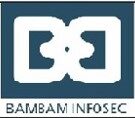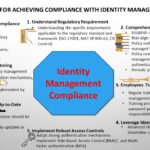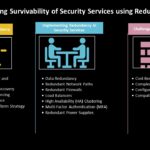
Many security frameworks and standards indicate that organizations should have security processes documented. How essential is the process document? ISO/IEC 27001 – Clause 7.5 emphasizes the importance of having documented processes and procedures to ensure the effective implementation of an organization’s information security management system (ISMS). The information security standards recognizes that documented information is necessary for the consistent and repeatable execution of information security controls. The goal of the process documentation is to reflect how a process is designed and approached within an organization. The key drive of the process document is not all about the organization process, but alignment with best practices standards.
From my years of experience in compliance assessment and audit, there have been situations where organizations’ documented processes are different from what is established in the company. Does it mean the documented process is non-compliant? No, however, the purpose of the process document has been disregarded!
In addition, there have been discussions on the difference between a process document and standard operating procedures (SOP). The documents are related but serve slightly different purposes within an organization. Process document offers a high-level understanding of how a particular process functions without delving into detailed step-by-step instructions while SOP delves into details, step-by-step instructions for the execution of specific tasks or activities within a process. Each document is designed to comply with security controls and requirements.
Process documentation is a systematic approach for capturing, organizing, and presenting information about a particular process or set of processes within a specific business process and organization. It serves as a valuable resource to create a comprehensive and clear reference guide that outlines how a particular process functions, to ensure consistency, improve efficiency, and understanding among stakeholders.
Key purposes and components of Process Documentation:
Overall, process documentation is a fundamental aspect of effective business process management, providing a structured and accessible guide for all stakeholders involved in or impacted by a particular business process.
Process documentation serves as a valuable tool in many ways, including:
Consistency and Standardization: Process documentation ensures that the team members consistently perform tasks to reduce the likelihood of errors or variations in output.
Compliance and Auditing: Supports compliance efforts with regulatory requirements and internal policies by providing a documented record of processes that can be reviewed by the auditor(s) during an audit.
Training and Onboarding: Serves as a training resource for new employees, helping them understand how tasks are performed within the organization and what is expected of them.
Knowledge Transfer: Facilitates knowledge transfer among team members and within the organization, ensuring that expertise is not solely dependent on individuals.
Risk Management: Identifies potential risks and points of failure within a process, allowing for proactive risk management strategies.
Continuous Improvement: Provides a foundation for process improvement initiatives by identifying bottlenecks, inefficiencies, or areas for enhancement.
Performance Measurement: Establishes a baseline for measuring the performance and efficiency of a process through defined KPIs.
Customer Experience Improvement: Helps identify areas where customer experience can be improved by streamlining processes and reducing friction points.
Common components of Process Documentation:
Process Name and Overview: Clearly state the name of the process and provide a high-level overview of its purpose and objectives.
Documentation Version Control: Establish a version control system for the process documentation to track updates and revisions over time.
Process Scope and Boundaries: Define the scope of the process by specifying what is included and excluded from the documented process.
Roles and Responsibilities: Identify the individuals or roles responsible for overseeing and executing each step of the process. This clarifies who is responsible for what tasks and ensures accountability.
Process Flowchart: Visual representation of the sequence of steps and decision points in the process. Flowcharts help stakeholders grasp the overall structure and flow of the process.
Detailed Process Steps: Break down the process into detailed, step-by-step procedures. Clearly outline the actions, tasks, or activities involved in each step and the responsibilities of individuals or departments at each stage.
Key Performance Indicators (KPIs): Metrics or indicators that measure the performance and effectiveness of the process. KPIs help in assessing whether the process is meeting its goals and can be used for continuous improvement.
Risk and Control Points: Identify potential risks or challenges associated with the process and outline control points to mitigate these risks. This includes considerations for compliance, data security, and other relevant factors.
Quality Standards: Where quality management is part of the organization’s process criteria, specify any quality standards, compliance requirements, or industry regulations that the process must adhere to. This ensures consistency and adherence to organizational standards.
Exceptions and Error Handling: Highlight any decision points where any exceptions, errors, or contingencies may occur during the execution of the process. Clearly define the criteria for making decisions at these points.
Resources and Tools: List the resources, tools, software, or equipment required for the successful execution of the process. This may include technology systems, forms, or specific documents. It ensures that the necessary resources are available when needed.
Communication Protocols: Outline communication protocols within the process, including how information is shared, reported, and escalated.
Who should be responsible for Process documentation?
It is important to know that process documentation is often most effective when it involves a collaborative effort, bringing together the expertise of various roles within the organization. The responsibility for process documentation can be distributed among various roles and individuals within an organization. The specific responsibilities may vary depending on the size of the organization, the nature of the process, and the industry. Regular reviews and updates to the documentation should be part of a continuous improvement cycle to keep it relevant and reflective of any changes in the business environment.
Process Owner Responsibility: The process owner is typically responsible for overseeing and managing a specific business process. They play a key role in initiating and driving the documentation process. The process owner ensures that the documentation accurately reflects the current state of the process, aligns with organizational objectives, and supports continuous improvement.
Process Participants/Subject Matter Experts (SMEs) Responsibility: Individuals and SMEs who actively participate in or have in-depth knowledge of the process should contribute their insights to the documentation. They play a crucial role in detailing the steps, decision points, and nuances of the process.
Regulatory and Compliance Experts Responsibility: In industries with strict regulatory requirements, compliance experts should review and contribute to process documentation to ensure that it aligns with regulatory standards.
Leadership/Management Responsibility: Leadership and management teams should endorse and support the process documentation efforts. They set the tone for the importance of documenting processes and ensuring that the organization operates efficiently and compliantly.








Your point of view caught my eye and was very interesting. Thanks. I have a question for you.
Thanks for sharing. I read many of your blog posts, cool, your blog is very good.